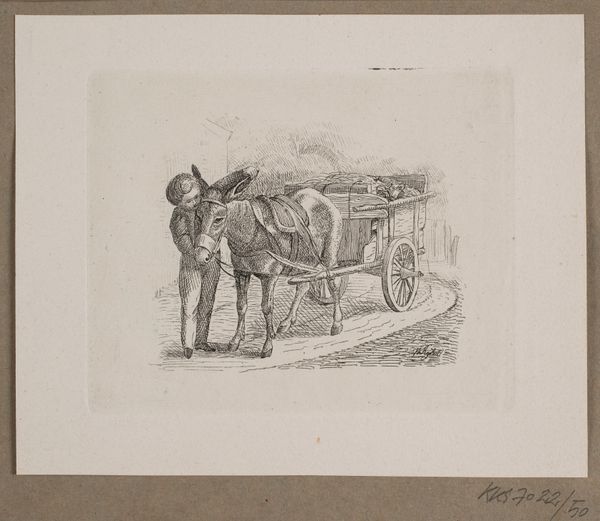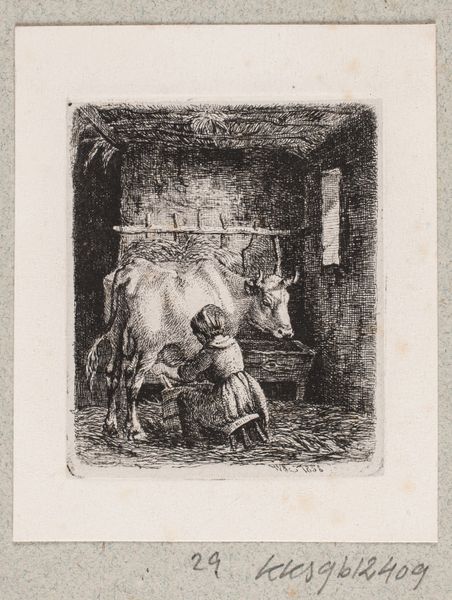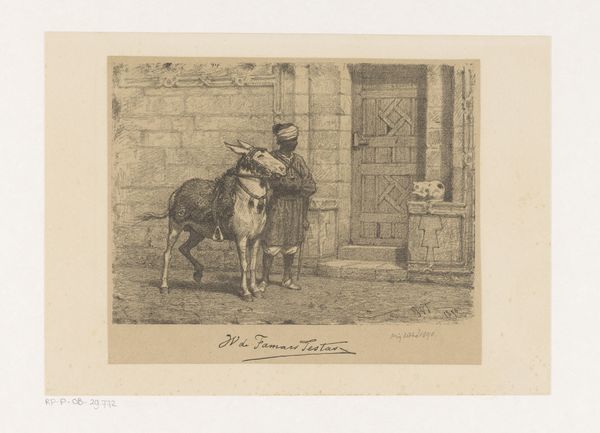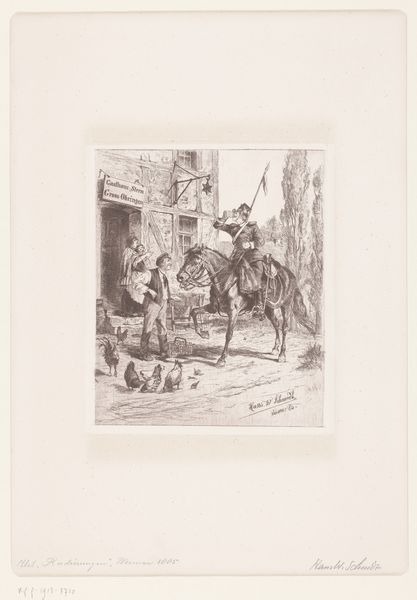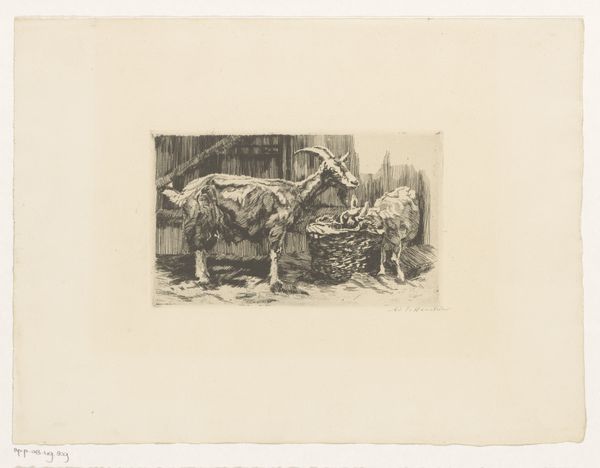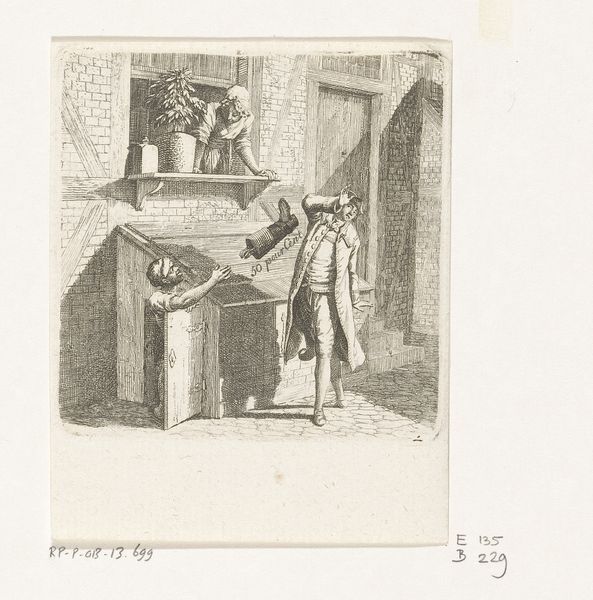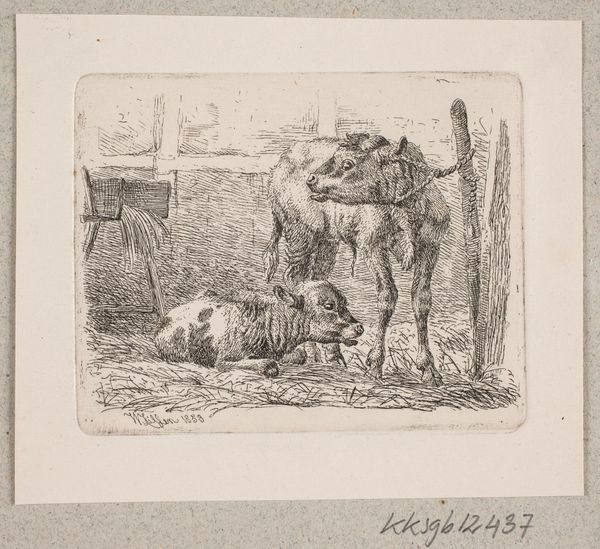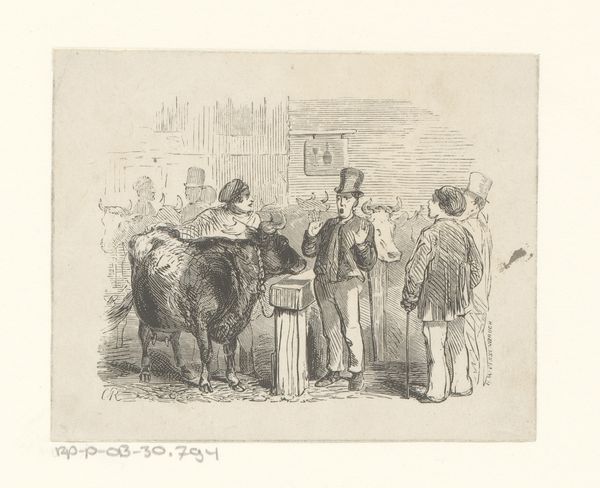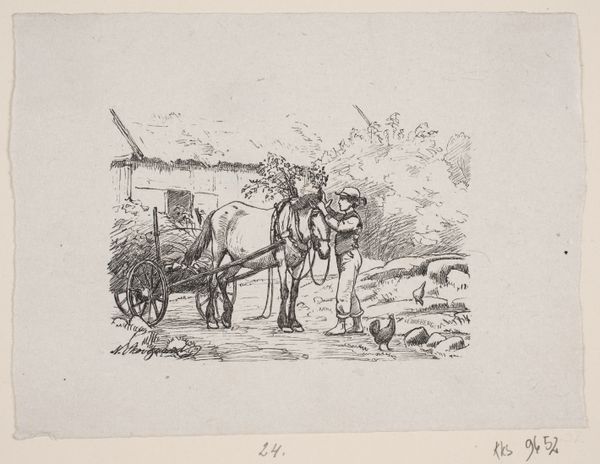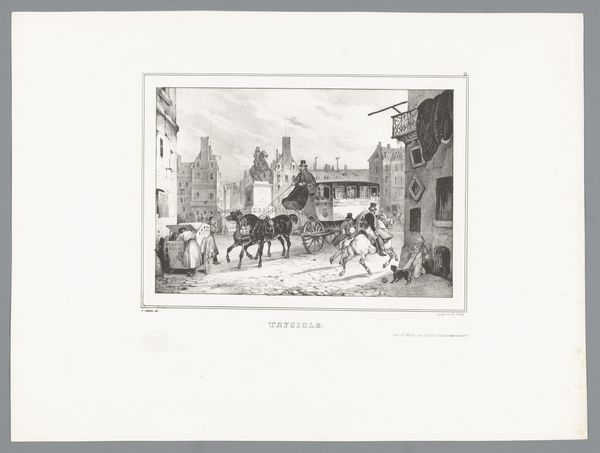
print, etching, engraving
#
ink drawing
# print
#
etching
#
genre-painting
#
engraving
#
realism
Dimensions: 96 mm (height) x 124 None (width) (billedmaal)
Editor: We’re looking at "Ved en romersk Smedje" or "At a Roman Smithy," created in 1871 by F. Hendriksen. It’s a print, using etching and engraving techniques. It's incredible how much detail he packed in here, right? What do you notice first when you look at this work? Curator: You know, what strikes me is the everyday-ness of it all. The title suggests a grand, historical scene, maybe emperors and gladiators. But instead, we get a humble snapshot of working life. See the way the woman supports the donkey, while the smith attends to its hoof? It's tenderness, patience. Does the quiet domesticity surprise you? Editor: Absolutely! It’s such a grounded portrayal. The setting feels ancient and worn, yet the figures seem timeless, caught in their routine. What is the meaning, then? Curator: Meaning... Ah, that’s always the chase, isn't it? For me, the beauty is in the lack of a grand statement. It simply is. Life, work, connection. I see a certain dignity in it – honest labor, a shared burden. But tell me, what feelings surface as you consider this humble image? Editor: It does seem quite lovely and balanced between all parties, even with the donkey. It evokes a feeling of stillness, maybe? As if the etching itself froze this specific moment in time. Curator: Beautifully put. The etching technique really lends itself to that feeling of suspended animation. Art immortalizing a humble and hardworking moment. Editor: I really enjoyed this reading. It’s intriguing to see how an image seemingly focused on the mundane reveals something really quite beautiful when we slow down and truly observe. Curator: Exactly. Perhaps, that's the whole point. Now go on, explore the other artworks. Let them whisper their stories to you.
Comments
No comments
Be the first to comment and join the conversation on the ultimate creative platform.
